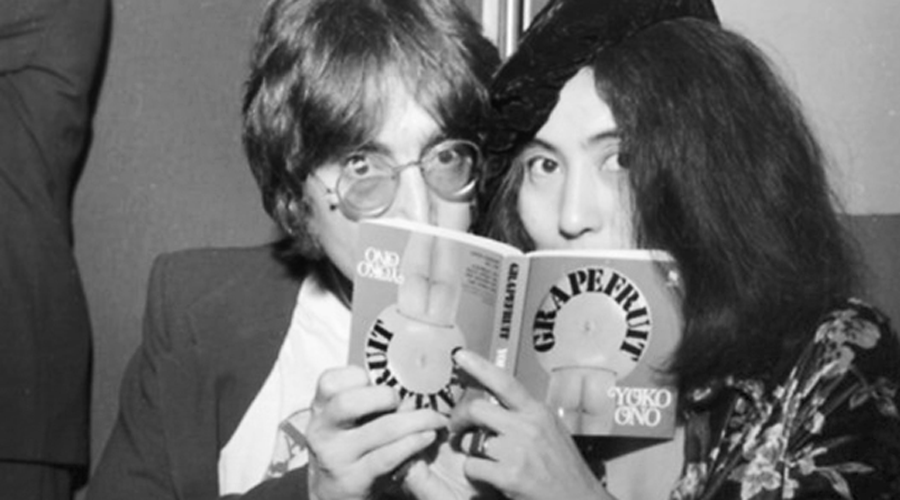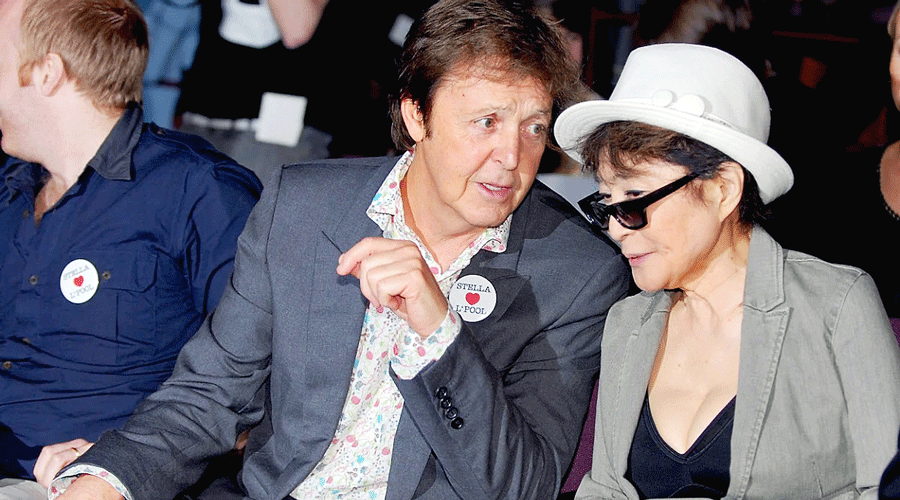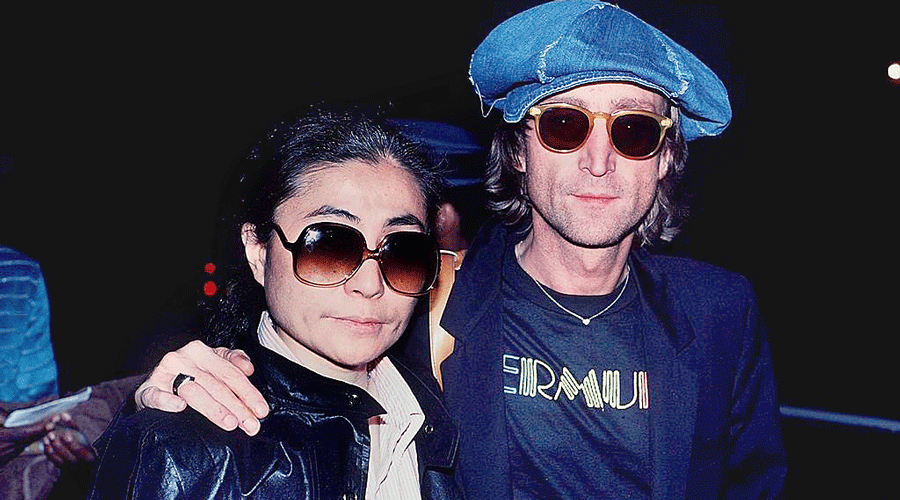People change over the course of a relationship and, at times, it reaches the point of taking different roads. That’s what happened to John Lennon and The Beatles. He loved being a Beatle but there came a point when he wanted to be more than what the world wanted him to be. Words were exchanged. Rumours flew. Ultimately, the Beatles ended the journey and fans needed a punching bag named Yoko Ono.
But you know what: She has kept alive the memory of John Lennon and the changes he wanted to see in the world without ever complaining. They were perhaps soulmates. And even at 90, she is “imagining” the world Lennon sang about. It feels like what she sang in her 1970 song — Yes, I’m A Witch: I’m not gonna die for you/ You might as well face the truth / I’m gonna stick around / For quite a while / Yes, I’m a witch.
‘IMAGINE A CLOUD DRIPPING’
We often forget that a lot of Lennon’s reputation remains tied to the music of the Beatles, which is unlike that of Yoko Ono. Even before she met the Beatle, Ono was a leading avant-garde artist, and that reputation hasn’t changed.
Lennon’s song Imagine remains an anthem for troubled times, which continue to chase and bite humanity. At the time of its release, a critic even wrote that the “lyrics could have come out of a stoned fortune cookie”. The song came barely a year after the split of the Fab Four. What we don’t talk about is how the song was inspired by the one word Ono had used in many of her 1960s conceptual art works — Imagine.
Lennon and Ono came face to face in London’s Indica Gallery in 1966 where one of her conceptual art works — Cloud Piece — required viewers to climb a ladder. The words accompanying the piece were: “Imagine a cloud dripping. Dig a hole in your garden to put it in.” Lennon even said during a 1980 BBC interview that Ono should have been credited on the song: “A lot of it — the lyric and the concept — came from Yoko, but those days I was a bit more selfish, a bit more macho.”
The clarion call for world peace was even on former US president Jimmy Carter’s mind, who once said to American network NPR: “In many countries around the world… you hear John Lennon’s song Imagine used almost equally with national anthems.”

Yoko Ono and John Lennon at a book signing for Grapefruit in London. The Telegraph
CONCEPTUAL ART
Paul McCartney’s late wife, Linda, was a top photographer. Similarly, Ono, by the time she met Lennon, was making waves as an artist. Why did the two click?
The answer can be as simple as art. Lennon was always interested in art and he went to Liverpool Art College. Until the two met, he was surrounded by musicians and perhaps Ono allowed him to explore his other creative side.
“Just as I was ridiculed by the music world — though it was quite unfair, because I was, you know, composing music long before I met John — so in the same way he was always accused by the press of not being a real artist but of being a dilettante. And it was all so untrue,” she said in an interview a few years after Lennon was shot dead. Lennon’s work was more graphic while Ono is more conceptual.
Many of Ono’s conceptions are timeless. In Breathing Piece real people stand around and breathe, in Match Piece real people light matches and watch them until they disappear while Cut Piece is the one in which real people with real scissors come to the stage and cut off Yoko’s clothes.
Her artistic bent of mind was shaped early on. Born in Tokyo to a banker father, she moved back and forth between the US and Japan. After World War II her family’s wealth couldn’t protect her from hardship. But they survived and rebuilt life after the war. As a young girl in Westchester, New York, she was woken up in the morning by a grand chorus of the birds outside her window. “I found myself, automatically, making an attempt to translate the sounds of the symphony of birds into musical notes. Then I realised that since the singing of many, many birds was so complex, I could not possibly translate it into musical notations. But I immediately realised that it was not a question of my ability, but what was wrong with the way we scored music,” she said in 2002. That was the start.

Yoko Ono with Paul McCartney. The Telegraph
After she enrolled in Sarah Lawrence College, her story was published in the campus newspaper. The story was called Of a Grapefruit in the World of Park, which was about some young people deciding what to do with a grapefruit, which itself is a hybrid just like Ono. It later became a performance piece, and her first artist book of instructions would bear the title Grapefruit when published in 1964. A hybrid of an orange and a pomelo, grapefruit for Yoko became a metaphor for her own hybridity as Japanese and American and as an artist bridging disciplines.
‘THE GUY WAS TOTALLY IN LOVE WITH HER’
When Ono and Lennon met, she had only heard of Ringo Starr. Ono gifted the Beatle a copy of her book Grapefruit. They fell in love. Though Lennon’s collaborations with Paul McCartney made them icons, Lennon told Rolling Stone that it was Yoko who was the true artistic genius. ”Yoko is as important to me as Paul and Dylan rolled into one. I don’t think she will get recognition until she’s dead.”
At this point, Lennon was married to the late Cynthia Lennon. Yet, the Imagine singer started inviting Ono over to his house and collaborated on the experimental album, Unfinished Music No. 1: Two Virgins (1968). Then, according to Lennon, they made love at dawn. Cynthia later told NPR: “I came home and they were there, which was sort of curtains for our marriage, as far as all of us were concerned.”
Soon after their wedding in Gibraltar, Ono and Lennon started their Bagism period. It was “Love+Peace = Bagism”. Confused? TV commentator David Frost was and Lennon had to explain: “It’s like a tag for what we all do, we’re all in a bag, you know, and we realised that we came from two bags—I was in this pop bag going round and round in my little clique and she was in her little avant-garde clique going round and round and you’re in your little telly clique and they’re in their…you know?”
Their art and methods of protesting wars and inequality found worldwide attention. And Beatles fans were unhappy; they thought Ono was trying to take Lennon away from the band. McCartney later told Howard Stern that although at the time Beatles found Ono’s presence at recording sessions to be weird, in retrospect it wasn’t such a big deal. “Looking back on it you think: ‘The guy was totally in love with her.’ You’ve just gotta respect that. So, we did. And I do.”
The last couple of decades have been kind to Ono and many have seen her more as an artist rather than the person who was seen in the studio with the Beatles. The 2000 retrospective, Yes Yoko Ono, that showed how she focussed on women’s issues. Much of the attack on her was misogynist and racist. She didn’t react. She remained the same — focussed on art. All that we need to know is Yoko Ono is in her Dakota apartment overlooking Central Park in New York, imagining and hoping that Lennon’s words in Imagine would one day come true.
